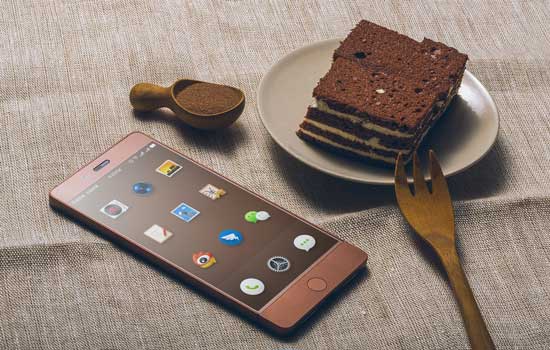Smartphones have become our primary gadget in order to do all day-to-day tasks. As these devices have become so powerful that they can bring any good laptop or computer to shame. Along with incredible hardware, the widespread adaptability and usage of these gadgets have allowed people to do almost anything on them. This is why currently 6.6 billion people or 83% of the world’s population are smartphone users. These smartphones have made our lives quite easy as we can call, message, do our work, study, and even watch movies on them. But all of this requires an internet connection connected to your smartphone.

As modern smartphones need a constant internet connection in order to send and receive data and important notifications. For that, it is recommended to keep them connected to a good Wifi connection as it would cost less than a traditional mobile data plan and also consumes less amount of battery in comparison to mobile data. Go for providers like Cox Communications for Wifi because Cox plans are quite affordable and good in terms of speed.
Yes, smartphones have become the favorite gadget of humanity today but this has given rise to a rivalry as well. This rivalry has sprung out between the two types of smartphones that are most popular today. These are iPhones and Androids, where the actual difference is between the operating system of these phones apart from many other differences.
Online forums are filled with loyal fans of both these operating systems constantly debating which one is the best. However, today we have written this article to explain the usage numbers globally of both these smartphones, and by these stats, we don’t intend to tell which one is a better phone, this is just to educate our readers regarding how many people use iPhones and Androids.
Usage Stats of iPhone and Android
According to Apple’s database iPhone is used by 900 million people globally out of which 113 million users are in the US. So iPhone holds 47% of the smartphone market in the US. On the contrary, a total of 3 billion people use Android globally out of which only 129 million are in the US. So Android’s market share becomes 53% of users in the US. Although iPhone gives Android close competition it still lags behind some 15 million users, while in the global landscape Android has a major lead. 71% of all smartphones in the world are Android-based, versus iPhone at just 29%, with smaller players like Xiaomi, Samsung, Oppo, and Vivo taking an edge.
Audience Poll
There was a user poll in which people were asked about who they thought would be bigger in five years, iPhone or Android. Out of a total of 839,000 votes, 51% said iPhone while 38% said Android, and 13% were unsure. With almost a million people voting, iPhone won heavily, but clearly, the majority of people are biased and wrong as this poll was conducted in the USA, and due to such big of a lead that Android has it will be impossible for Apple to catch up in mere five years.
Android’s Future
Also, this is why it’s likely Android will actually take a bigger lead globally in the coming years. Breaking down the user numbers, in only North America there is a nearly a 50/50 tie between iPhone and Android, which also varies from time to time. Globally though, it is a completely different story. Because 81% of phones in Asia are Android while 90% of phones in South/Latin America use Android as an operating system making it the biggest market for Android. 84% of smartphones in Africa are Android while the smallest usage chunk of Android after North America is in Europe with 67%.
This shows the global advantage Android has as a whole, but it only gets better for Android as the population increases. The US has a population of 330 million people currently. The projected population of the United States is said to be 423 million by the year 2050. In Europe, the current population is 746 million people, there are different series of projections here, but they are expected to be stagnant.
Asia is the most populated continent with a 4.5 billion population while the projection is 5.3 billion by 2050. Similarly, Latin America has 665 million people which is estimated to jump up to 780 million by 2050. Africa has a 1.3 billion population while 2.5 billion is their projection of population by 2050.
The reason behind these population stats is to signify the dominance of Android in the future. As Android is bigger in developing regions of the world, holding odds of 4 to 1 against the iPhone. This makes a case that while America could continue to be a 50/50 Android/iPhone market, globally Android could grow from a 71% market share to something more in line with 80% to 90% with the increase in the population of Android-dominated markets.
Will Android’s Global Influence Affect Apple?
And finally, is all this Android’s dominance a bad thing for Apple? Simple Answer, No. Android has a ton of different phones, with tons of companies using that software, where Google, Samsung, and all others have different models because Android works on an open-source licensing business model where any brand having that license from Google can use the Android operating system in their phones.
Apple is the only group making iPhones and using their in-house operating system the iOS. By comparing it to any bestselling single Android device iPhone would normally outsell any individual Android device, while also having a customer base with a little more money, which does lead to higher sales for things such as the Apps on the App Store. Apple also benefits from the global smartphone market, with things such as AirPods. As Apple has 70% plus of the global wireless headphones market and sold 100 Airpods million in 2020 and they have more profit margin over any phone.
Final thoughts
One thing is for sure Android has been the go-to operating system for most people due to a huge range of models and companies that uses it, as well as the affordability factor. But it is also true that Apple has created a niche market for itself in terms of the iPhone which has become a status symbol. Talking about that poll in which over 50% of the participants were based in the US and the average age was the late 20s, it is pretty simple why people choose iPhone. Nevertheless, Apple still will be going strong in the future due to its niche products.
 Technology News, Reviews and Buying Guides review, monitor review, tablet review, laptop review, mobile review, smartphone review, buying guide,
Technology News, Reviews and Buying Guides review, monitor review, tablet review, laptop review, mobile review, smartphone review, buying guide,


